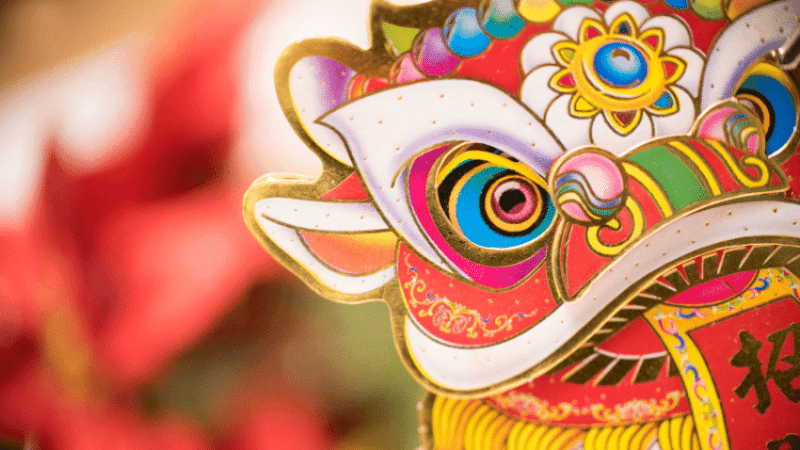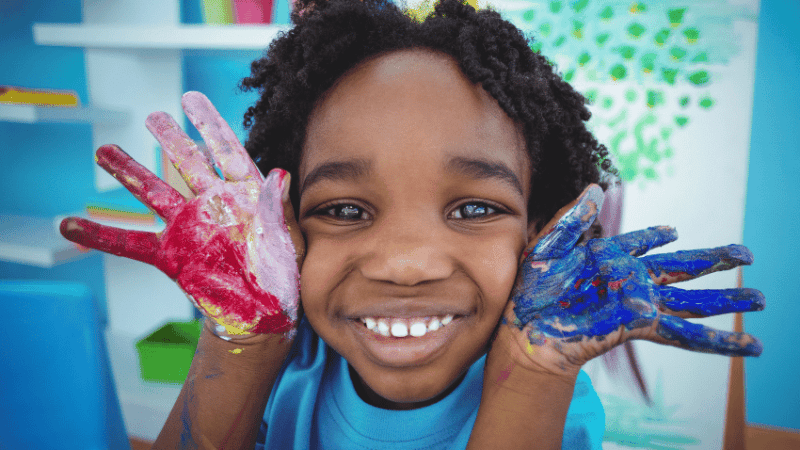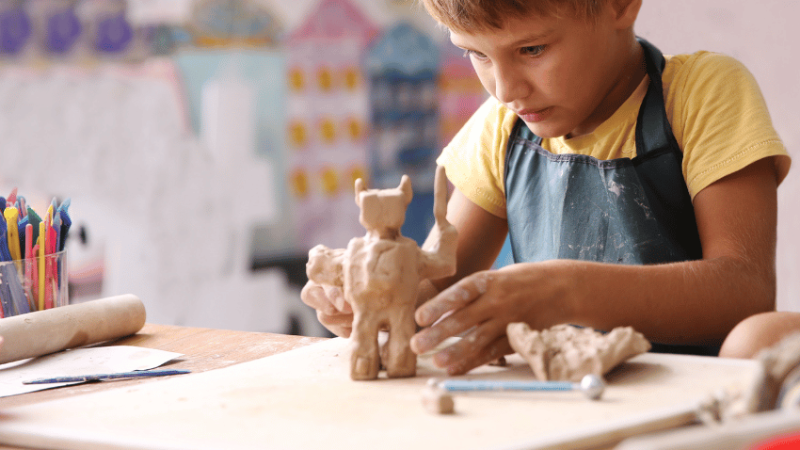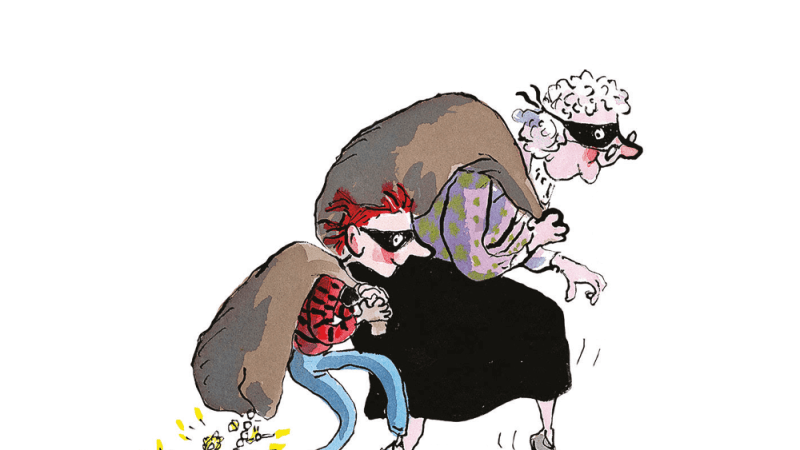Early years outdoor art – Ideas for rain or shine
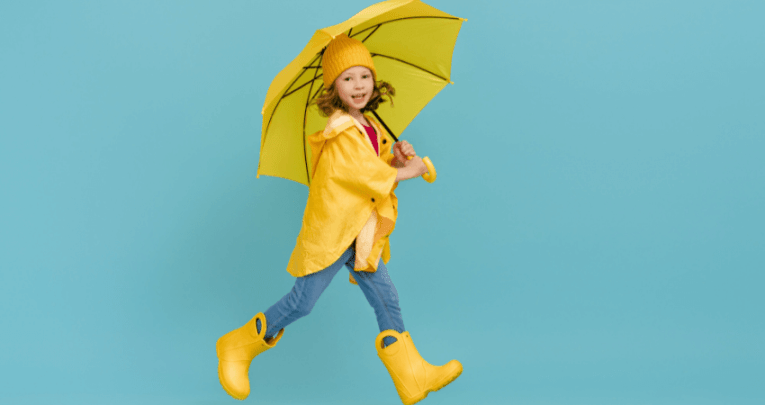
Revel in our unpredictable British weather and store some of these creative ideas under your sun (or rain) hat to enjoy with your class…

- by Adele Darlington
- Primary art consultant, teacher and author with over 20 years' experience
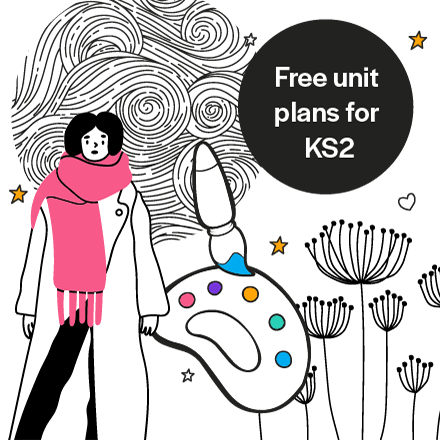
Like the incalculable UK climate, no two days are ever the same in the world of a primary school.
One thing is for certain though – each new day offers us the opportunity to combine the creative subject of art with our erratic outdoor elements to provide exciting, engaging and educational experiences for young learners.
Children love the freedom of the outdoors – the fresh air and space trick them into thinking they’re not learning even when they are!
Contrary to stereotypical thinking, classrooms do not have to have four walls and a ceiling, and they certainly don’t have to be indoors. Education and optimum learning can take place anywhere and at any time. (To see outdoor maths in action, try this recipe for subitising soup.)
All weather types, no matter wet or dry, hot or cold, offer a multitude of ways for learners to explore, experiment and create wonderful works of art.
As the saying goes, there’s no such thing as bad weather, only inappropriate clothing. So, stock up on puddle suits, coats, hats, sun cream and wellies and prepare to take your class on some outdoor arty adventures…
Rainy day activities
The rain lends itself to a plethora of explorative activities.
Whether it’s actually coming down outside or just wet from previous rainfall, take advantage of nature’s showers and venture out onto the playground.
Powder paint and puddles combine perfectly to provide the opportunity for pupils to explore basic colour theory.
Give them pots, spoons, brushes and powder paint and let children play about with quantities and combinations of colours.
You will most likely end up with a playground of brown puddles, but your class will have discovered so much in creating them – notably the fact that mixing the three primary colours together results in brown!
Encourage discussion as the children explore and drop in subject-specific vocabulary – such as the terms ‘primary’ and ‘secondary’ colours – to aid learning and create meaning.
As well as puddle painting, there are oodles of other arty activities children can partake in when the weather is wet.
Paint pictures then hang them in the rain to see how the drips alter their appearance, use tissue paper on a white canvas and watch the colours bleed, or attempt some raindrop photography with an iPad.
The children will be full of amazement if they look closely at a raindrop to photograph it; the inverse image within the drop will fill them with awe and wonder!
Sunny day activities
With sunshine undoubtedly comes shadows, and these can be used to create a variety of pieces of artwork – some transient and some of a more permanent nature.
You can use example of work by artists such as Vincent Bal to excite and inspire pupils. They will love his fun, cartoony style and the imaginative ways he uses shadows to complete his artwork.
Give children time to play with objects and the shadows they cast, time to explore and time to experiment with compositions.
Using a camera to photograph shadow artwork means creations can be kept forever rather than lost when the sun goes behind a cloud.
If you have a wall in the sunlight, or a sunny section of playground your pupils can use their hands in different positions to create shadow pictures.
Task them with creating different animals and see who can make the most realistic looking shapes.
Children also love to draw around shadows – place objects on a roll of paper and draw an outline (toy dinosaurs cause much excitement!) or use chalk directly on the playground.
Drawing around human shadows is another fun activity and facial features and hair can be added either with chalk or found objects in nature such as stones, leaves and flowers.
Sunny days are also perfect for landscape artwork. Arm your class with paper, pencils and clipboards, find a shady spot and spend an afternoon admiring the view.
Discuss what they can see, touching on compositional elements such as foreground, midground and background.
Encourage them to look at the space on their blank canvas and visualise their drawings.
Thumbnail sketches are fun ways for them to compose their pieces before diving onto their plain page and viewfinders can help your artists if they wish to focus on particular aspects of the landscape.
Don’t worry if your area is more man-made then natural, the aims of the session can remain the same whether they are drawing trees and fields or a playground and buildings.
For a landscape with a twist, use the artwork of Alma Thomas to get your pupils thinking about a bird’s-eye view of what is in front of them.
Cold weather activities
While sunny days may be preferable for outdoor adventures, don’t let winter’s freezing temperatures put you off venturing into the playground; just wrap up warm and remember to pop on some gloves to avoid frosty fingers!
Snow is a sculpting gift to the world from mother nature and children can create with it in much the same way they would magic sand or play dough.
Provide sand moulds, buckets and other containers and encourage sculpting with hands, too. Many will want to create snowmen but why not give your class some other challenges – who can create a snow dog, a castle, a car or a boat?
If the icy temperatures last, you could invite viewers to admire your snow creations in your sculpture park.
Outdoor art kit
- Wet weather clothing such as puddle suits and wellies are essential for a rainy day. They not only keep the children dry but also ensure school uniform is protected from the colourful masterpieces being created.
- Sunhats are a must for those hot, cloudless days to protect children’s heads from the sun. It is also advisable to ask parents to send sun cream in with children if you are planning on creating in the sunshine.
- Tools such as brushes (decorator size as well as the usual school brushes), pots, palettes and toothbrushes. It is helpful to store this equipment together in a labelled storage container so it can be easily accessed for impromptu outdoor art experiences. Keeping indoor and outdoor art equipment separate is advisable as outdoor tools can obviously become a little bit grubby.
- A collection of objects with which to print on a large scale, such as old bike or pram wheels, sink plungers of various sizes, old wellies, trainers and other shoes with interesting sole patterns.
- Art easels for playground landscape and observational painting.
- Chalk is a fantastic medium for use outdoors. It will work on most outdoor surfaces including the playground and walls, and also develops a lovely velvety texture when mixed with puddles.
- Powder paint for creating colourful puddles.
- iPads or other tablets/photography equipment for outdoor photography projects.
- Old wooden or plastic frames can provide focus to outdoor art. Children can place them on the playground or field and fill with their artistic creations, whether that be drawing, painting or using found natural treasures.
Adele Darlington is an EYFS teacher and art lead in Rutland. She is also the author of 100 ideas for primary teachers: art published by Bloomsbury.
Follow Adele on Twitter @mrs_darl


